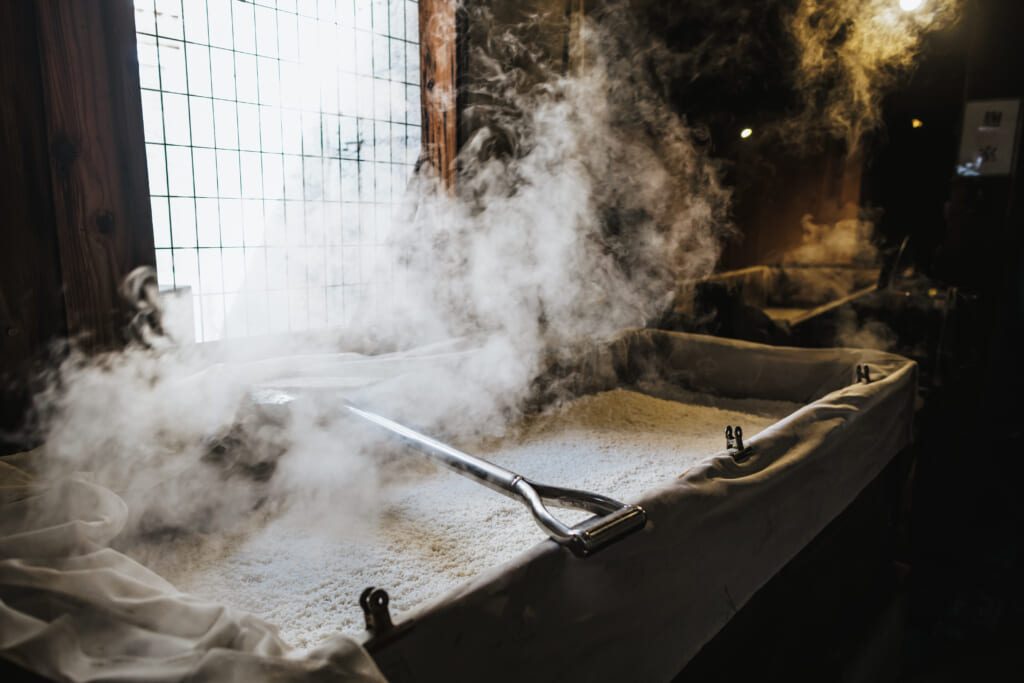
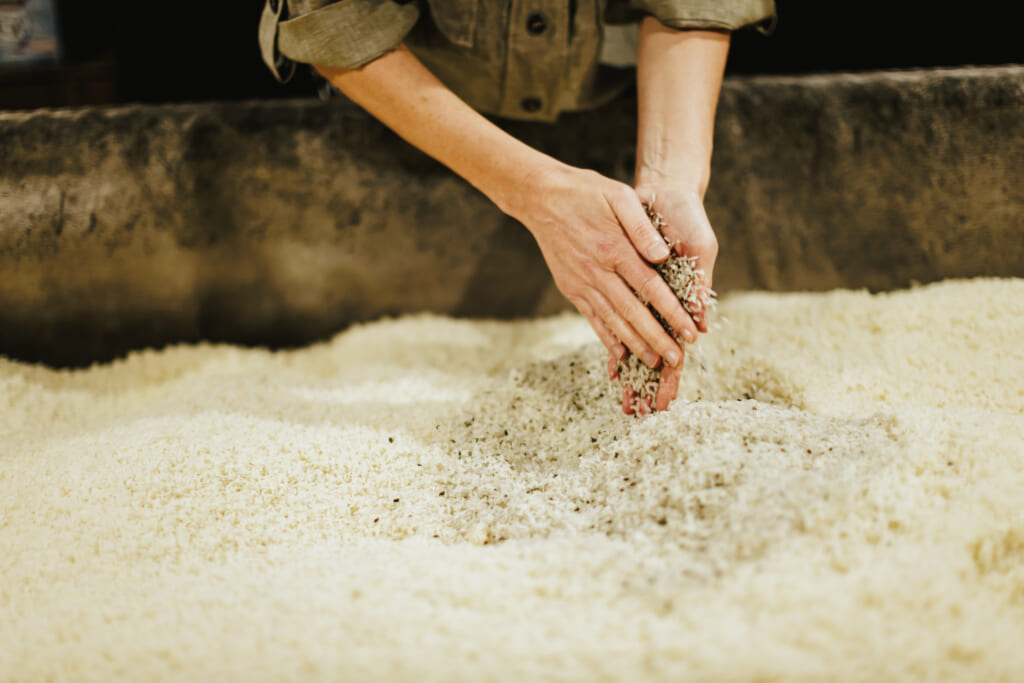
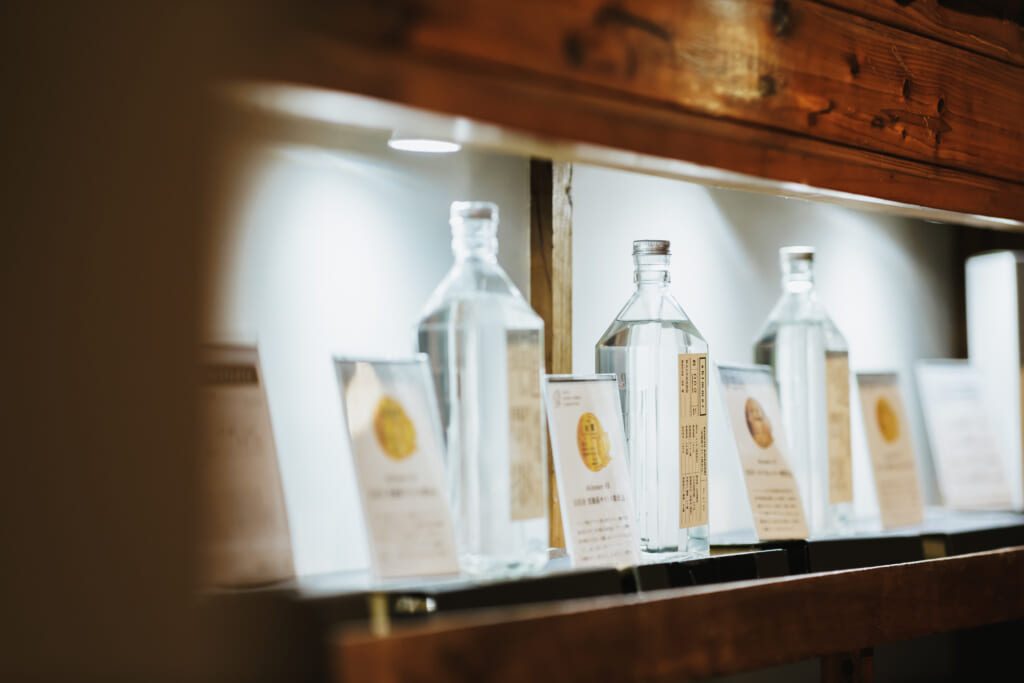
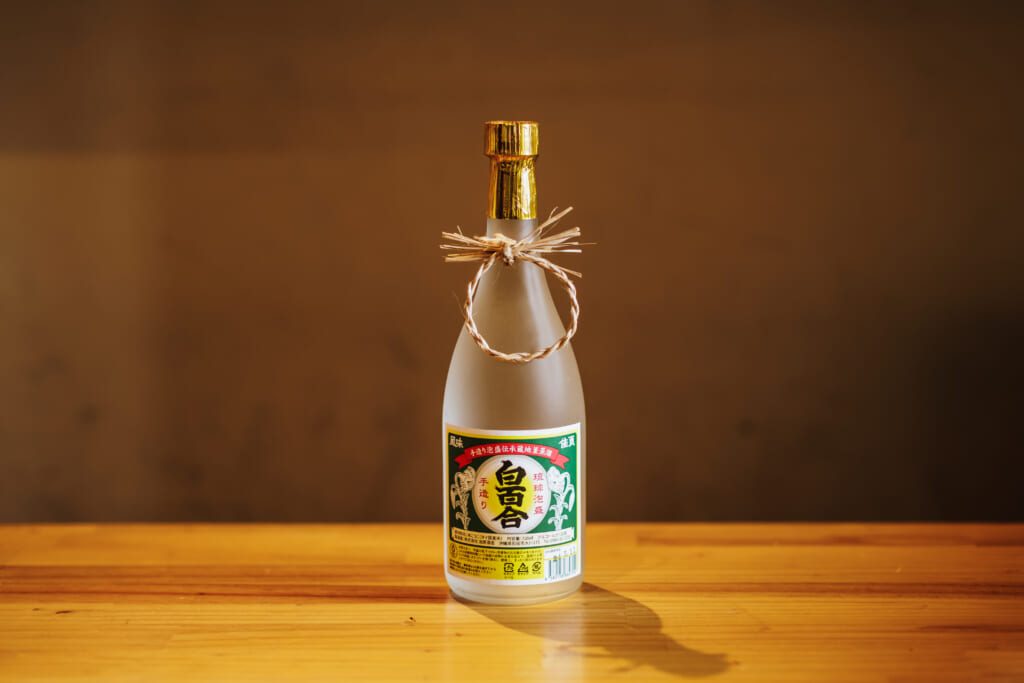
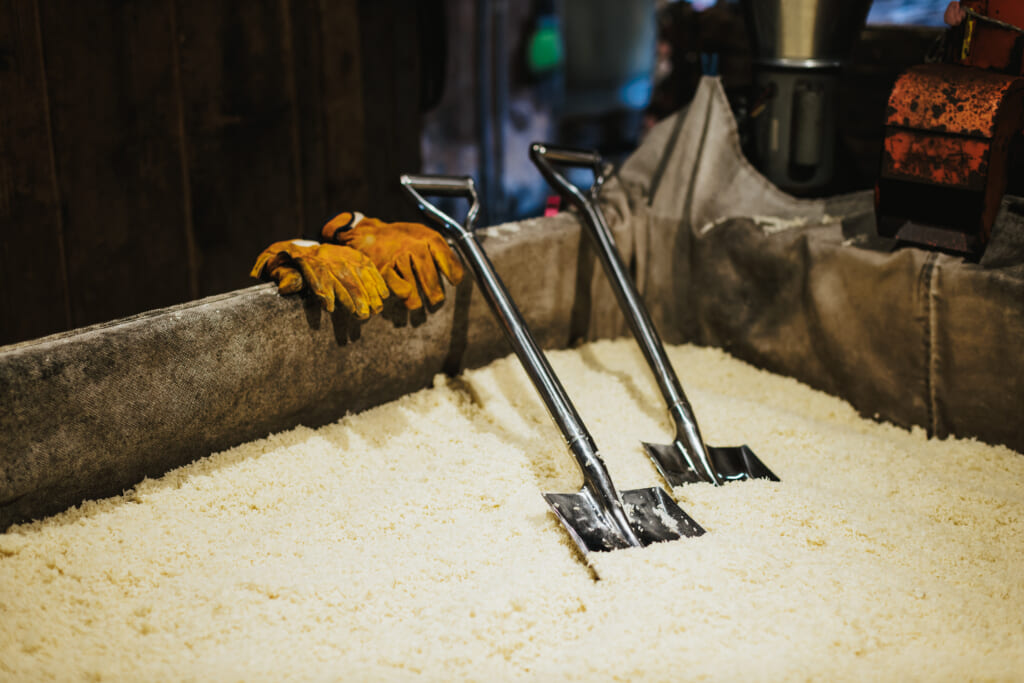
DiscoverYaima went to an Awamori distillery for a hands-on Awamori tour and tasting. And it was our first time! I gasped for a moment, because it was quite an extraordinary feeling when I entered in such an old wooden building. Much time to think about it, I didn’t have though. I had to roll up my sleeves and get to work! The craftsmanship behind Awamori, and my own hands touching the rice, opened my eyes and gave me a deeper knowledge about the history and culture of Awamori and Okinawa.
World of Kouji and rice
With this article I will take you with me and show you around, through the interesting world of Kouji and rice. And a lot of steam!
And you can experience the same unique Awamori experience. First a brief explanation and history of Awamori;
What is Awamori (泡盛)?
While Awamori may not yet be as widely recognized as sake or Japanese whisky, it is just as deeply woven into Okinawa culture as sake is to the main islands of Japan.
This year a UNESCO committee has decided to include Japan’s traditional knowledge and techniques for brewing sake and other alcoholic beverages—such as Shochu and Awamori—in its Intangible Cultural Heritage list.
Awamori is a distilled alcoholic beverage originating from Okinawa, known for its relatively high alcohol content (typically between 25% and 30%). Deeply rooted in Okinawa culture, it belongs to the same family of distilled spirits as whisky and shochu. Awamori is produced by fermenting rice kouji and water, using long-grain Indica rice as the primary ingredient.
Black Kouji mold (黒麹)
A defining characteristic of Awamori production is the use of black kouji (rice malt) mold. Rarely found outside Okinawa, this unique mold produces a high concentration of citric acid, preventing bacterial growth during fermentation. Its natural resilience makes black kouji mold ideal for Okinawa’s hot, humid climate, and essential for the distinctive Awamori flavor.
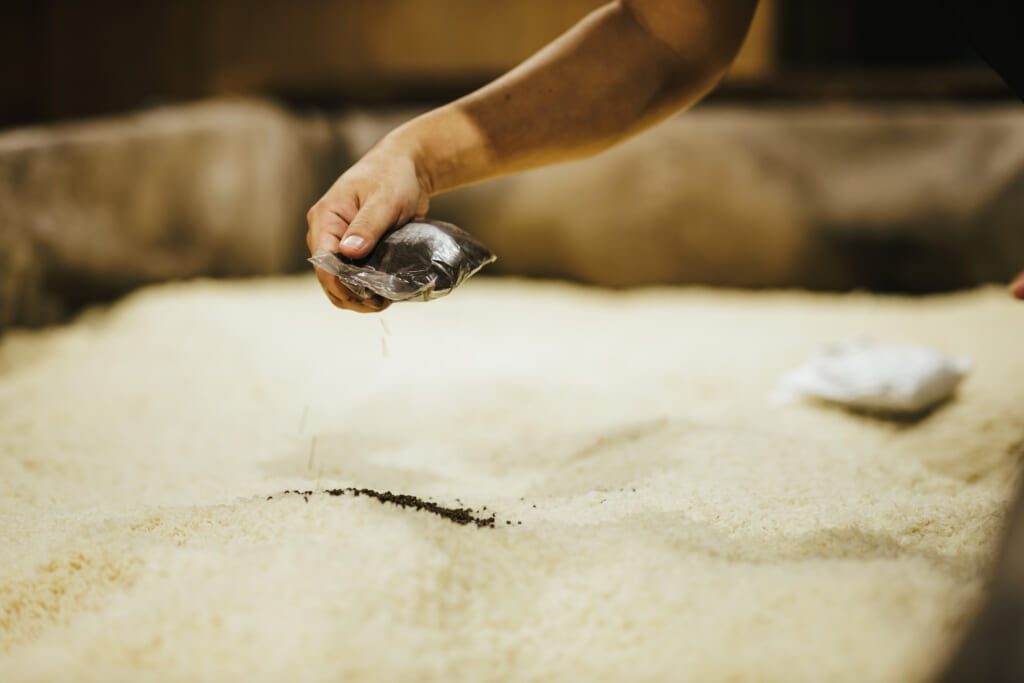
“Inui“
At Ikehara Distillery, the use of “Inui”, a specialized strain of Aspergillus luchuensis*, creates a mature Awamori flavor without the traditional aging process. This innovative technique elevates the spirit’s robust, full-bodied character.
*The name “luchuensis” reflects its connection to the Ryukyu Islands (Ryukyu is pronounced “Luchu” in an older dialect), where Okinawa and Ishigaki island are located.
History of Awamori
Alcohol production in Okinawa has a history stretching back centuries, much like in other parts of the world. Early documentation from around the year 600 describes a process where locals chewed rice to initiate fermentation.
“Seen as a luxurious offering, Awamori was often presented as gifts to visiting dignitaries, Chinese envoys, and Japanese feudal lords. It symbolized the kingdom’s wealth, refinement, and renowned hospitality.“
The Name ‘Awamori’
The earliest recorded use of the name “Awamori” dates back to the early 17th century, although the more generic term “saki” (meaning alcohol) was commonly used at the time. There are several theories about how “Awamori” got its name, with one popular explanation linking it to the bubbles (awa) that form during the distillation process. Traditionally, the number and size of these bubbles indicated the alcohol content—a vital clue before modern measurement tools were available.
The Ryukyu Kingdom
During the era of the Ryukyu Kingdom (approximately 15th to 19th century), the Okinawa islands were an independent monarchy engaged in trade with neighboring areas. This exchange of goods and culture introduced new influences. It’s believed, the distillation techniques for Awamori, were brought to the region from Thailand via China.
We think this trade history (and of course the location as well) make Ishigaki, The Yaeyama Islands and Okinawa so unique. It has such a different vibe than the main islands of Japan. With different food, weather, culture, crafts and spirits.
A refined drink for the elite
In the Ryukyu Kingdom, Awamori was closely associated with the royal court, nobility, and high-ranking officials. Only a select group of licensed distillers could produce Awamori for the royal court in Shuri, Okinawa. Seen as a luxurious offering, Awamori was often presented as gifts to visiting dignitaries, Chinese envoys, and Japanese feudal lords. It symbolized the kingdom’s wealth, refinement, and renowned hospitality.
During this time, Awamori remained largely inaccessible to ordinary citizens. It wasn’t until after the Ryukyu Kingdom’s reign ended and more modern times arrived that Awamori became widely available to the general public.
Awamori in recycled beer, sauce, or soy sauce bottles
Before World War II, Awamori was sold by weight in tin barrels, and branding or labels were of little concern. A turning point came in the early 1950s, when Awamori was first sold in bottles. With no bottles specifically designed for it, Awamori was sometimes packaged in recycled beer, sauce, or soy sauce bottles.
Back then, Awamori was often homemade, and small-scale distilleries dotted nearly every street. Today, however, there are six established Awamori distilleries on Ishigaki Island.
Comparison with Sake and Shochu
- Sake: Brewed, lower alcohol content (12–15%), made from short-grain rice.
- Shochu: Distilled like Awamori, but typically made from barley, sweet potatoes, or buckwheat, originating from main islands Japan.
- Awamori: Distilled, uses black koji mold and long-grain rice, specific to Okinawa
A Distillery of Family & Love
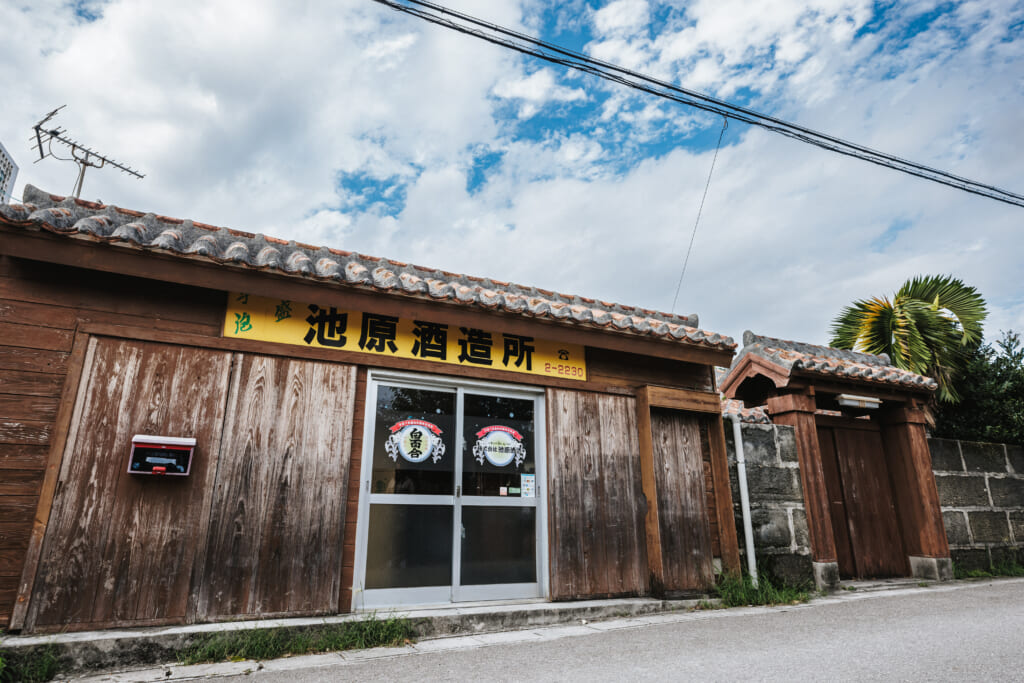
It was at this turning point in the history of Awamori, that Ikehara Distillery was founded. In 1951 Koukichi Ikehara and his wife, Nobuko, started the distillery. Nobuko came from a respectable family in Shuri, Naha, while Koukichi came from more humble origins. Despite their differing backgrounds, they fell in love. Their families opposed the relationship, prompting the couple to move to Ishigaki to be together.
Miso & soy sauce
In its early days, the distillery produced not only Awamori, but also miso and soy sauce, staple foods cherished by the local community. Sadly, Koukichi passed away at the age of 40, leaving Nobuko with their children and the distillery. Determined to continue, she persevered, raising her family while running the business.
Third generation
Over time, the focus shifted entirely to Awamori production, a tradition passed down from Nobuko to her son and now carried on by the third generation Yuu Ikehara.
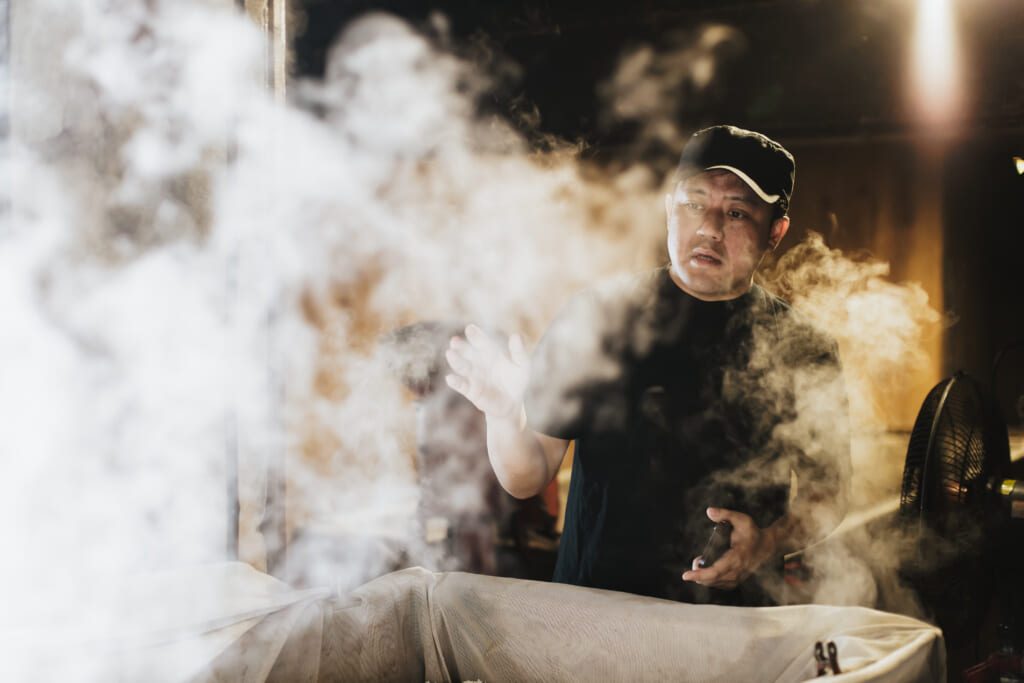
Handcrafted rare Awamori
The distillery takes exceptional care at every stage of the production process.
“Fermentation is an essential life process for microorganisms, and we believe that only through artisanal craftsmanship can we truly understand the subtle changes during this process. That’s why we do not automate,” says Yuu Ikehara.
Ikehara produces in limited quantities and their Awamori is mostly enjoyed by the local community, making it a rare find on the market. Yuu Ikehara has developed a method to accelerate the aging process without sacrificing traditional methods. This innovative creation is now known as ‘Shirayuri Inui’.
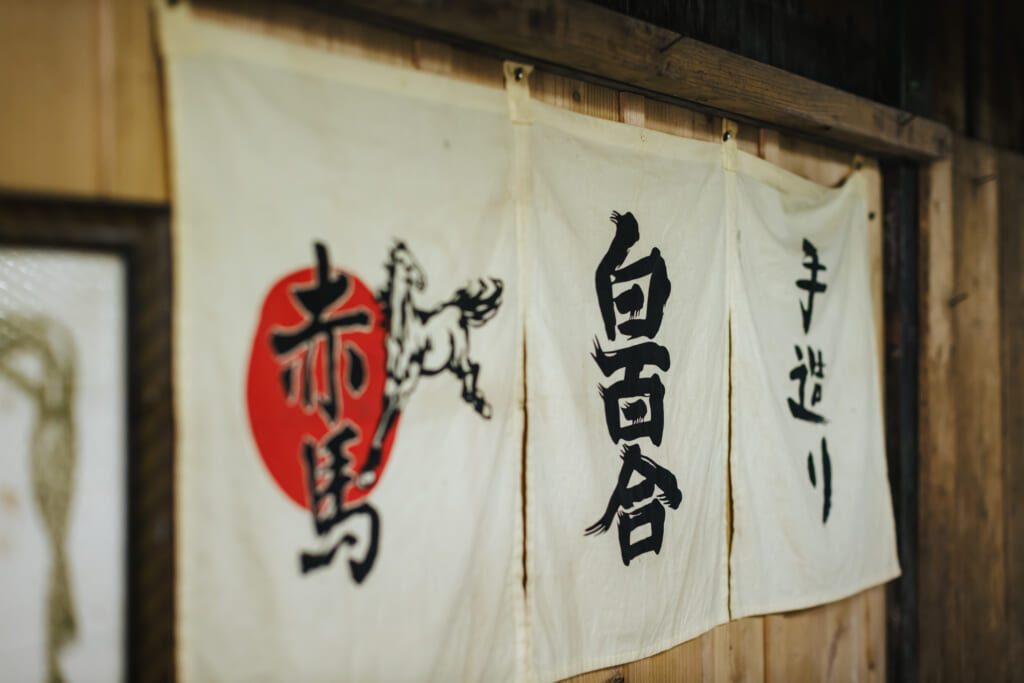
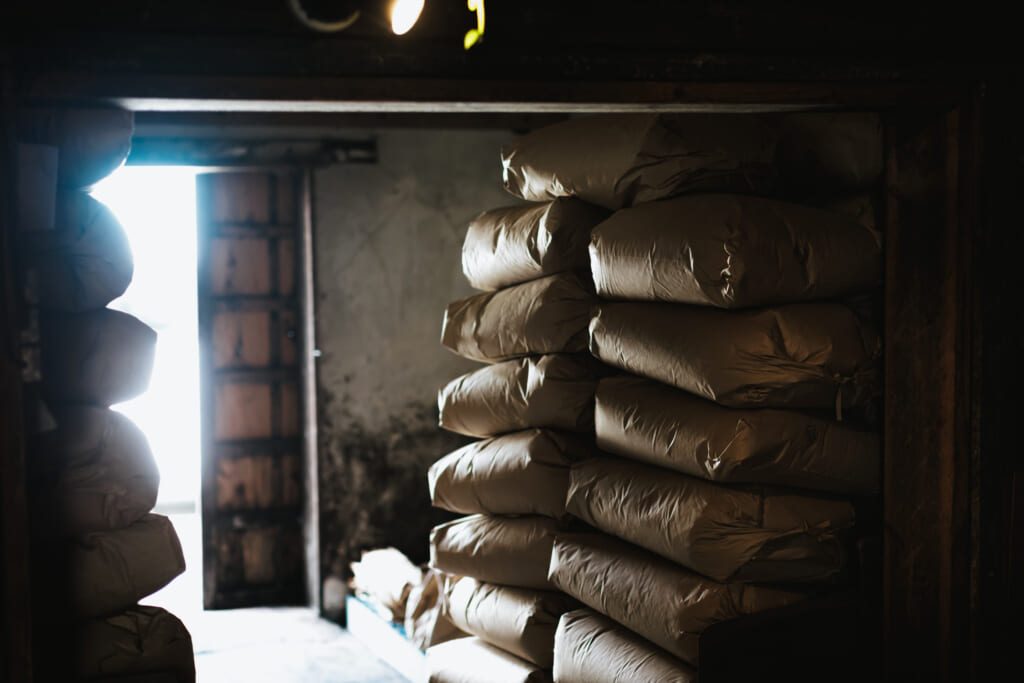
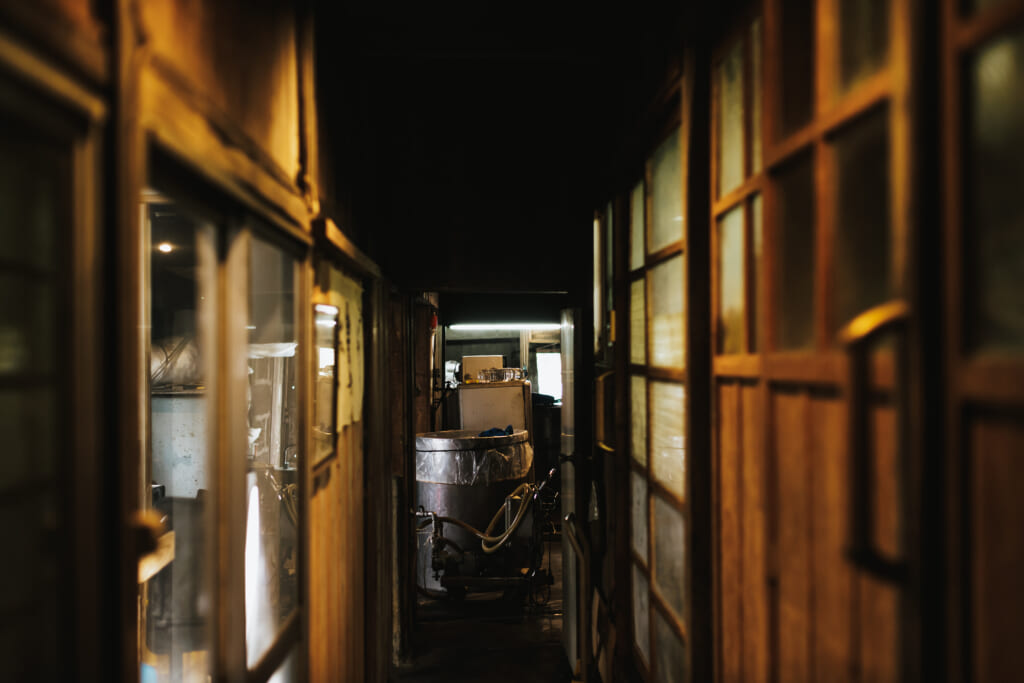
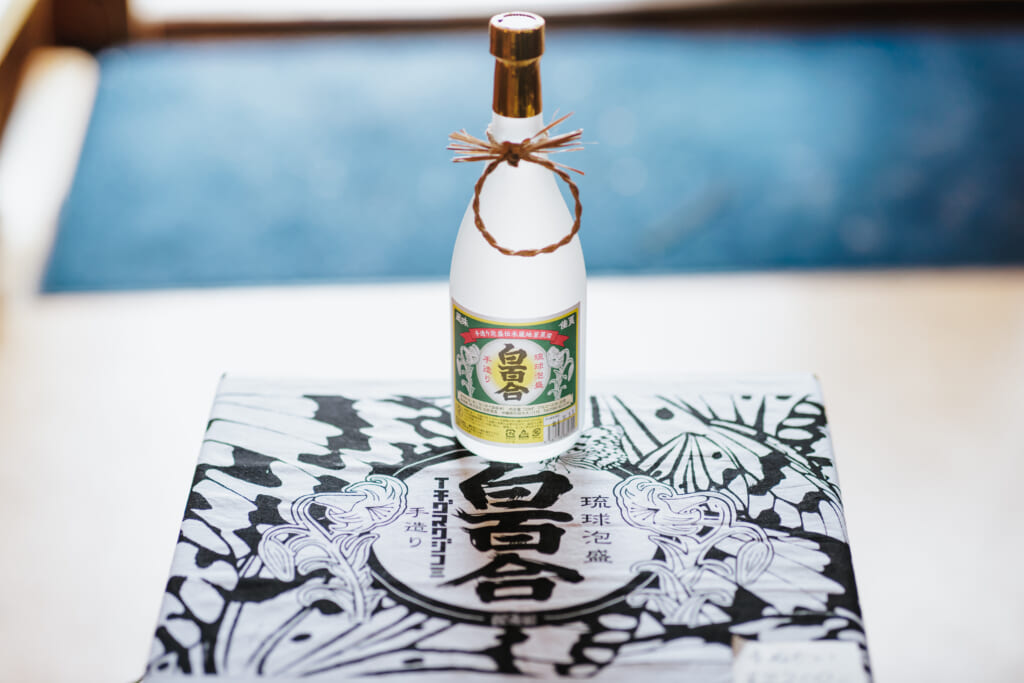

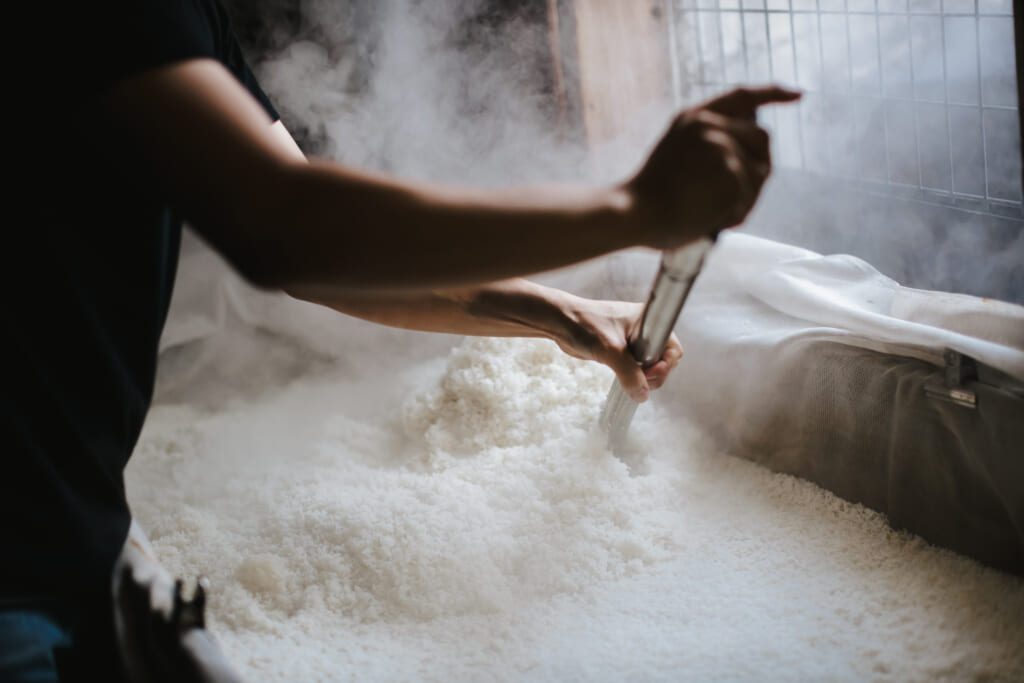
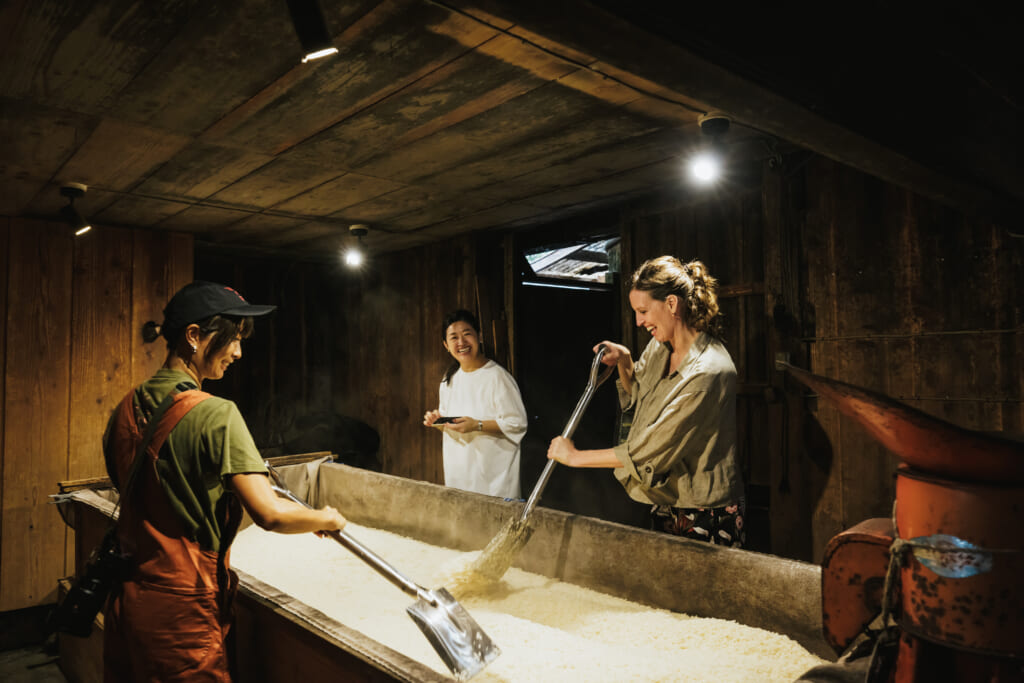
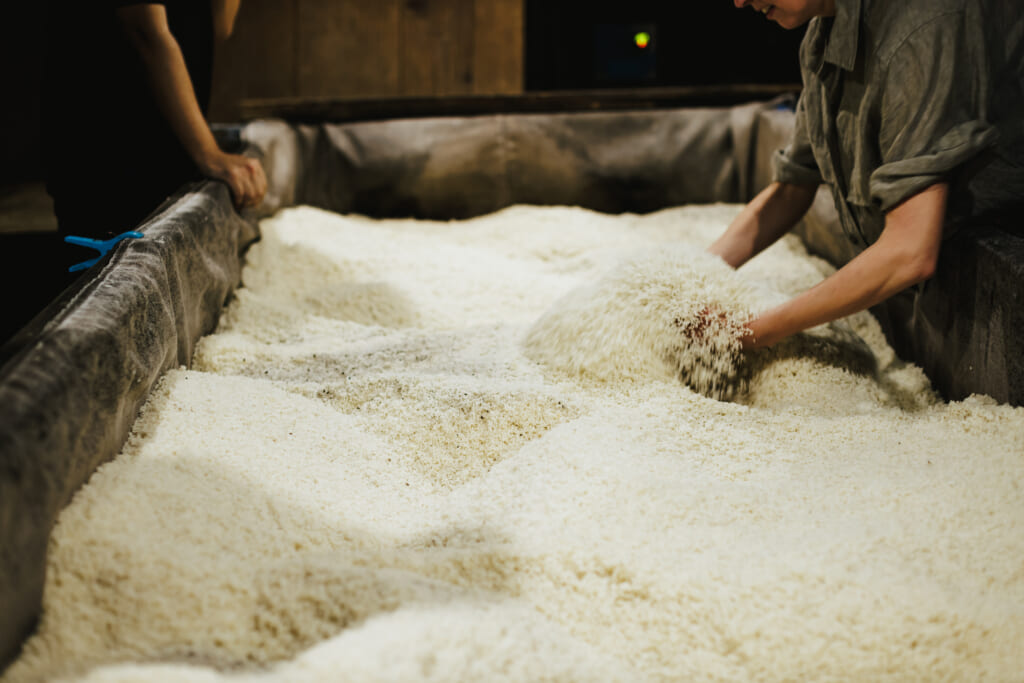
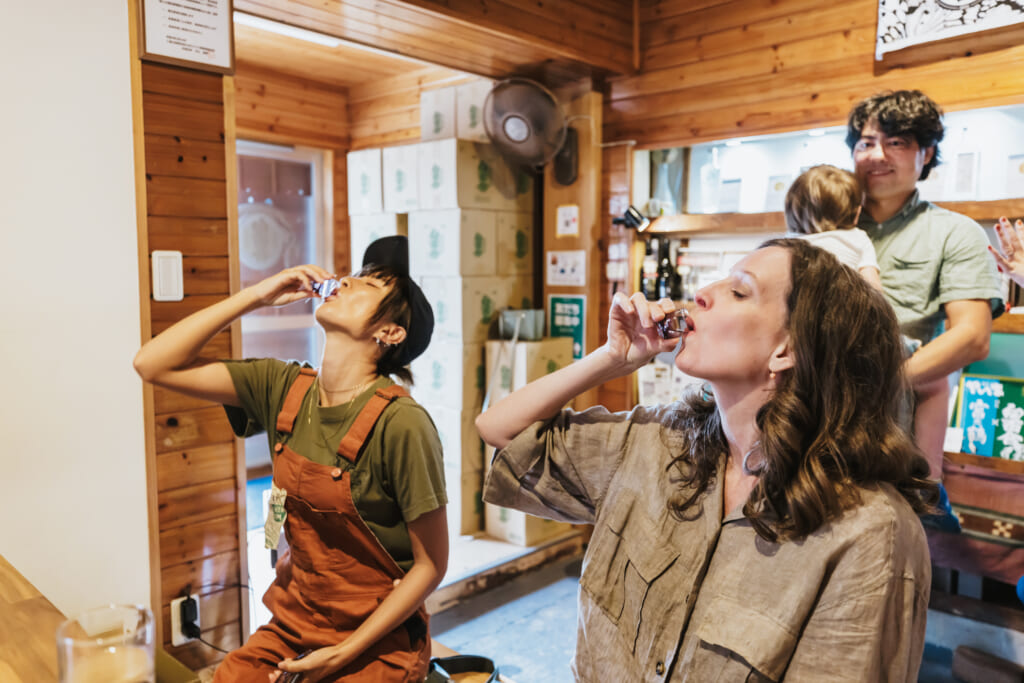
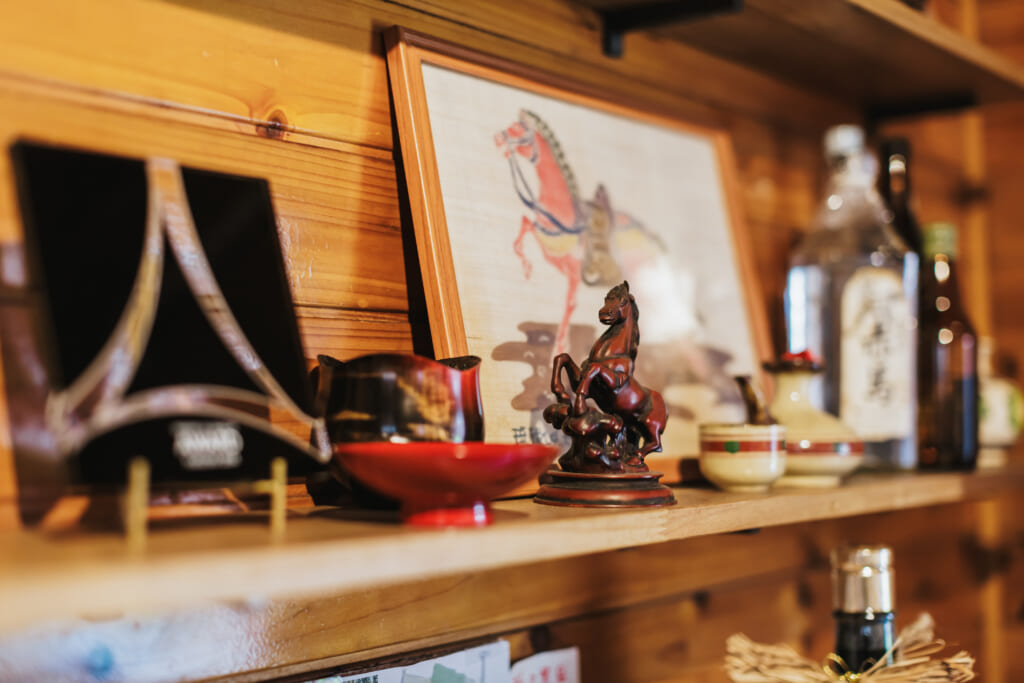
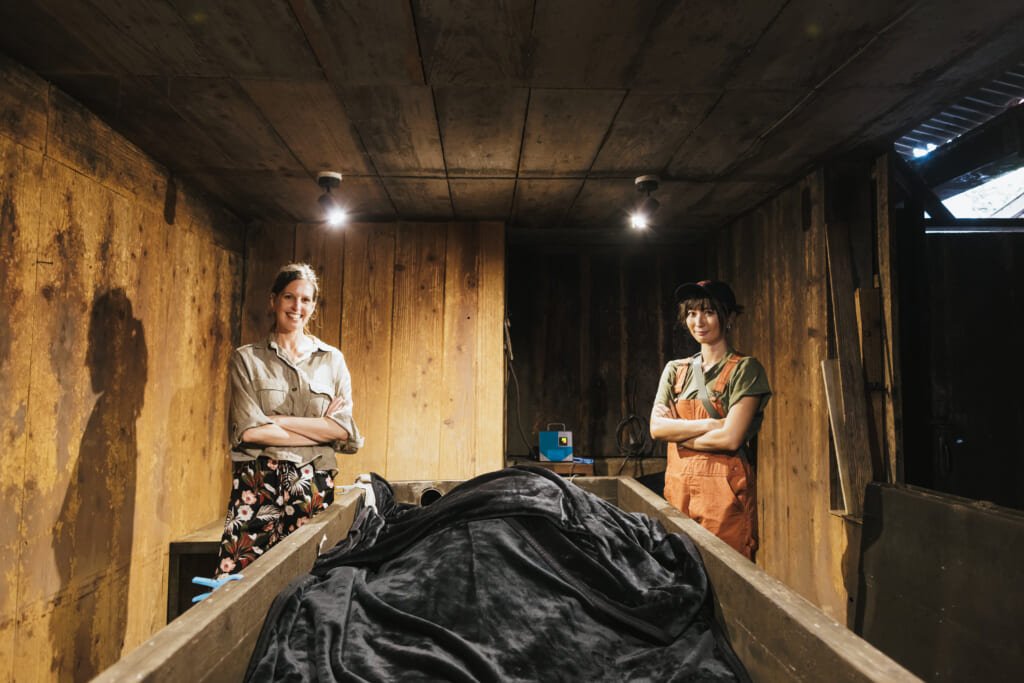

Warm, personal welcome by Yuu Ikehara
On the day of the tour, we find Ikehara Awamori Distillery tucked away in a narrow street in Ishigaki City. My eyes grow wide as I see it is housed in a beautifully preserved, original wooden building.
As though I’m visiting a friend
I open the sliding doors to discover a cozy shop behind them. I notice a corridor leading toward the distillery, at least that’s what I presume and a small garden visible through the window on the right. Yuu is waiting for us, with an older family member pottering around in the garden behind him. More than just a distillery, it seems to be a connected family home, making my tour feel as though I’m visiting a friend.
The wood, the steam…it really hits me in the face
I’m not the only one rolling up my sleeves today; I’ll be sharing this experience with Minori. In the cozy entrance and shop of the distillery, Yuu Ikehara first explains all about Awamori to us and talks about his family’s distillery.
He then leads us down the corridor, and I take my first steps into the dark, steamy interior. I don’t have time to pause and truly take in my surroundings; it’s all incredibly impressive, the wood, the steam, it literally hits me in the face.
Open mouth
I watch and listen, mouth agape, which I don’t even notice until I see the pictures later. I’ve felt this way several times in Japan. I’m originally from a small, well-organized country (the Netherlands), where much of life is systematically predictable, and people generally share a common sense of how things should be—despite it being an individualistic society. Japan, on the other hand, is often seen as a “group” culture, yet there are countless ways and possibilities to approach everyday tasks. At times, it really surprises me, just like here at Ikehara Distillery. This place takes me back to older times. The way this small distillery is organized is simply incredible. I love it.
A shovel and a rice ‘bed’
When I snap out of my daydream, I find myself holding a shovel, moving freshly steamed rice onto a sort of “bed” made of bamboo and Japanese cedar. Meanwhile, Yuu is transferring rice from the steaming “bed” to the kouji “bed” with a bucket.
Let me show you the process of making Awamori through my tour:
Step-By-Step Awamori making process
Steaming the Indica Rice:
Long-grain Indica rice carefully steams to achieve the perfect texture, preparing it for the fermentation process.
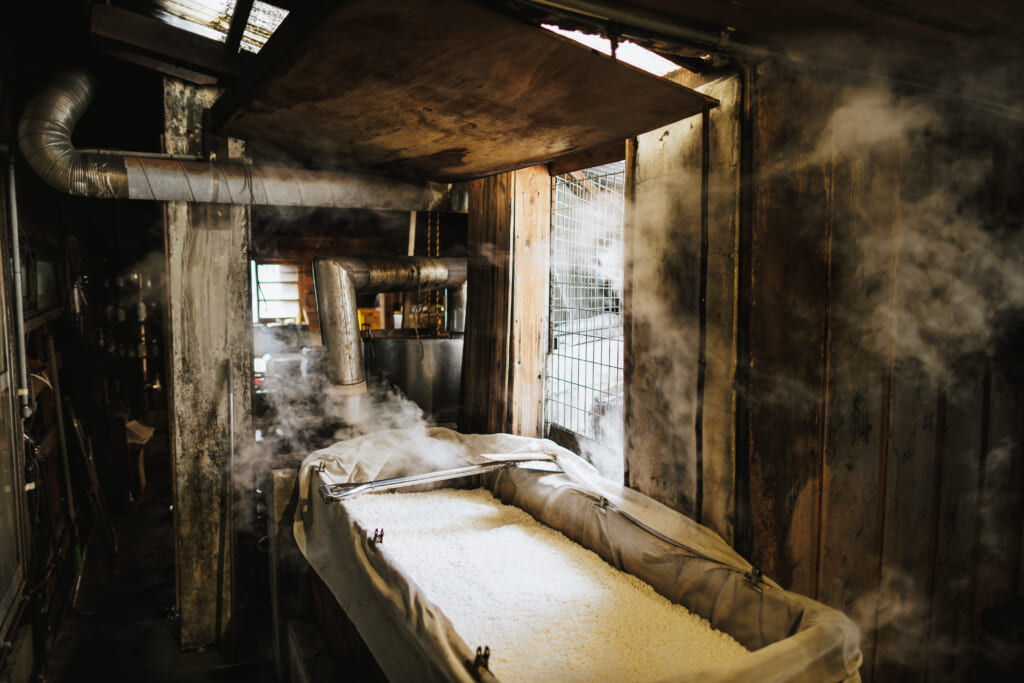
As I am working with clay, I love physical work, so making a flat rice bed is no trouble at all. We are all having fun, noticing sweat comes fast in this steamy condition. The fragrances are great, such sweetness from the rice fills the humid air around us.
After this first step Yuu invites us for a tasting and pours the first special ‘Shirayuri’ into a small ‘ochoko’ (an Awamori cup) with a very high alcohol percentage of 45%. We should drink it all at once inside the throat, to get around the taste buds on your tongue which would otherwise give a burning sensation rather than the robust mature flavors it has. This Awamori is famous for a boost of energy it gives to your body. And yes, this is absolutely true!
Then the rice is ready to rub in with the black Kouji mold.
Cultivating Black Kouji “Inui”:
The steamed rice is then inoculated with “Inui,” a special strain of black kouji mold. This mold breaks down the rice starches into fermentable sugars, setting the stage for alcohol production.
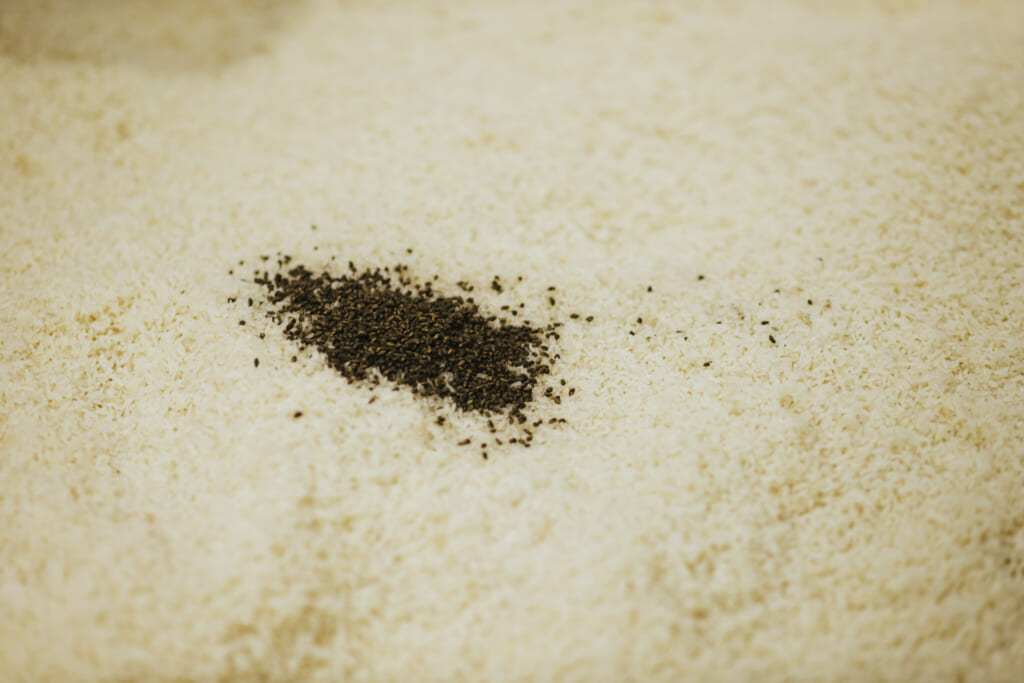
For me it’s always interesting to see how procedures in Japan are incredibly simple however yet so important and difficult at the same time. For the cultivation of the black Kouji mold “Inui” we rub the black kouji mold and rice between our hands and grab a mass to mix the Kouji well through the rice.
Creating the Moromi (Fermentation Mash):
The kouji-treated rice mixes with water and yeast to form a fermentation mash known as “moromi.” Enzymes from the kouji allow the yeast to convert sugars into alcohol, a process that typically takes a few weeks.
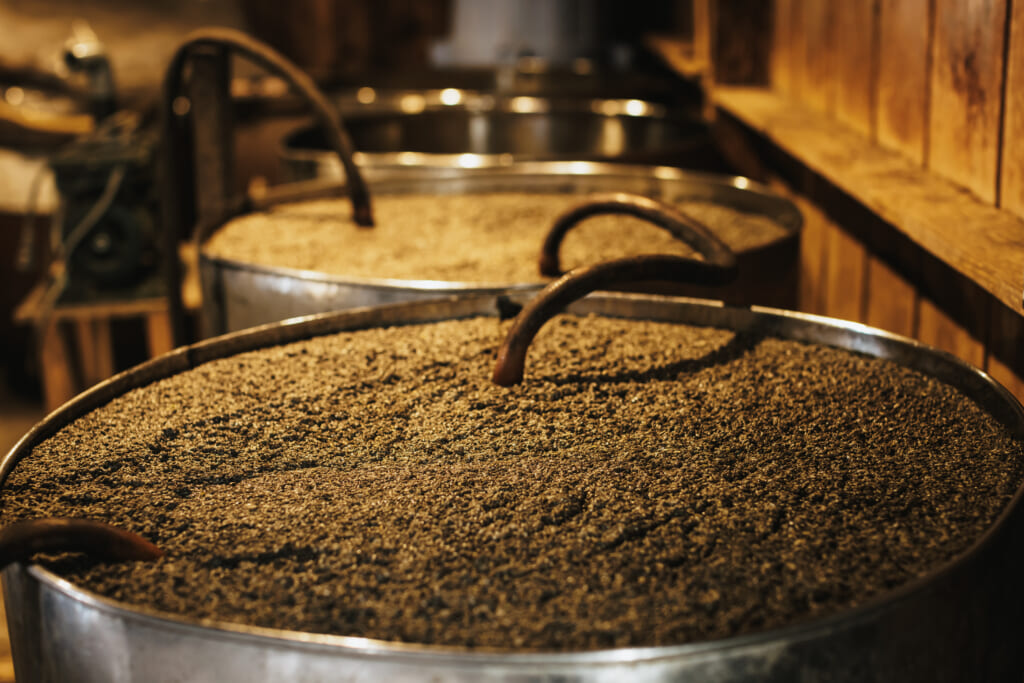
Fermentation:
During fermentation, aromas, flavors, and alcohol levels develop. The high citric acid content produced by the black kouji mold inhibits unwanted bacteria, making it ideal for Okinawa’s warm, humid climate.

Distillation:
After fermentation, the mash distills in a traditional pot still. The alcoholic vapors condense, resulting in a strong, clear spirit that forms the base of Awamori.
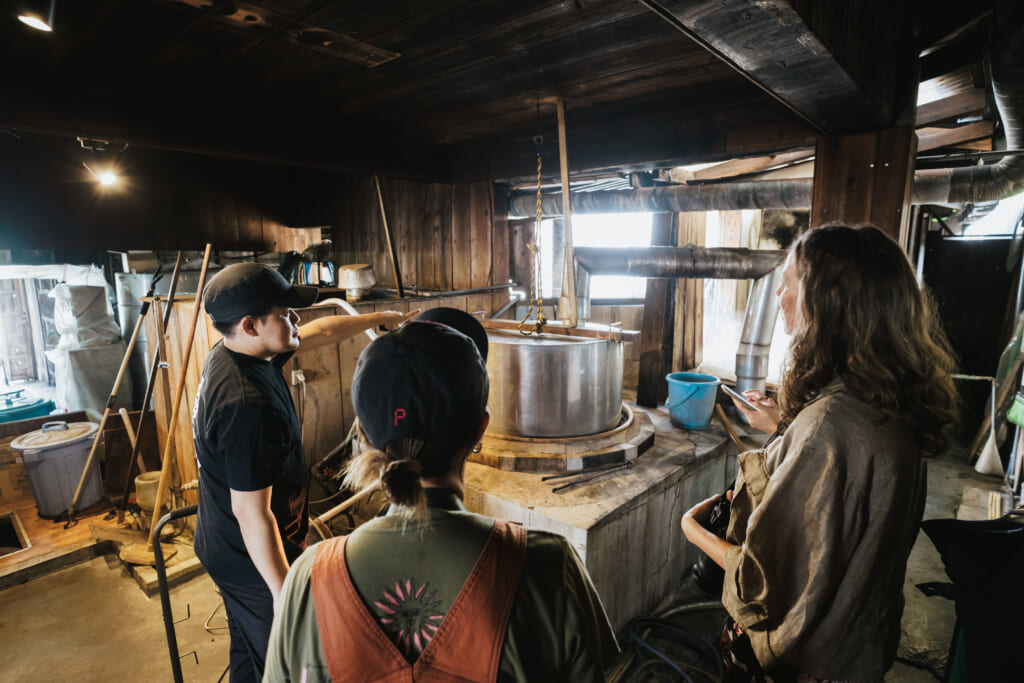
Aging (Optional):
Many distilleries age Awamori in traditional jars (kame) or tanks to deepen and mellow the flavor. At Ikehara Distillery, however, the use of black kouji “Inui” eliminates the need for a lengthy aging process, ensuring a full-bodied taste right from distillation.
Bottling, labeling and another tasting:
Finally, the Awamori is bottled and labeled, ready to enjoy. At the end of the ‘hands on’ part of the tour, Yuu serves us a different Awamori. One that goes extremely well with chocolate, which surprises me. I enjoy the creamy sweetness of the chocolate flowing around with the Awamori.
In the meantime Yuu takes care of our personal labels and we can label a bottle ourselves.
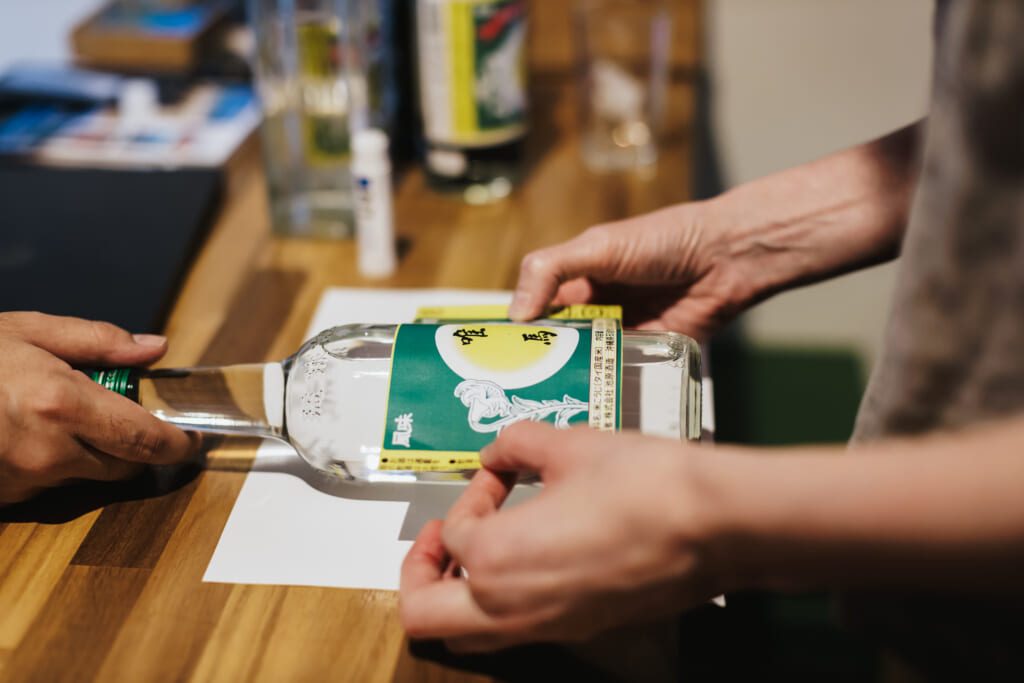
After the tour, we walk around the shop and presentation of the Awamori made by Ikehara distillery, (international) awards the distillery gained and several collaborations with local shops. I see Awamori with coffee beans. How original is that?
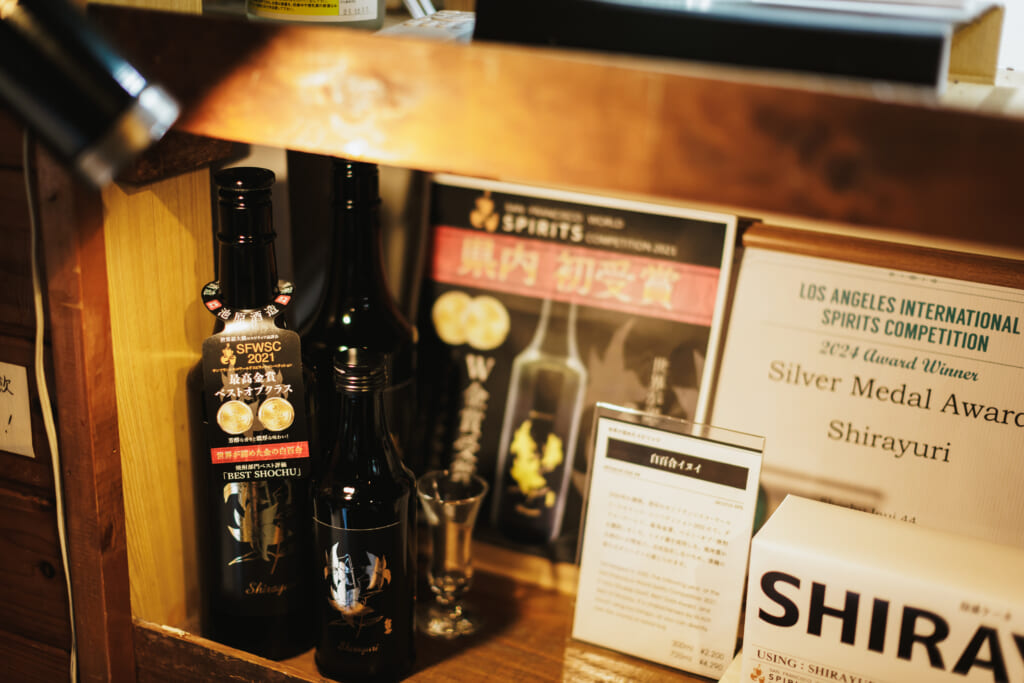
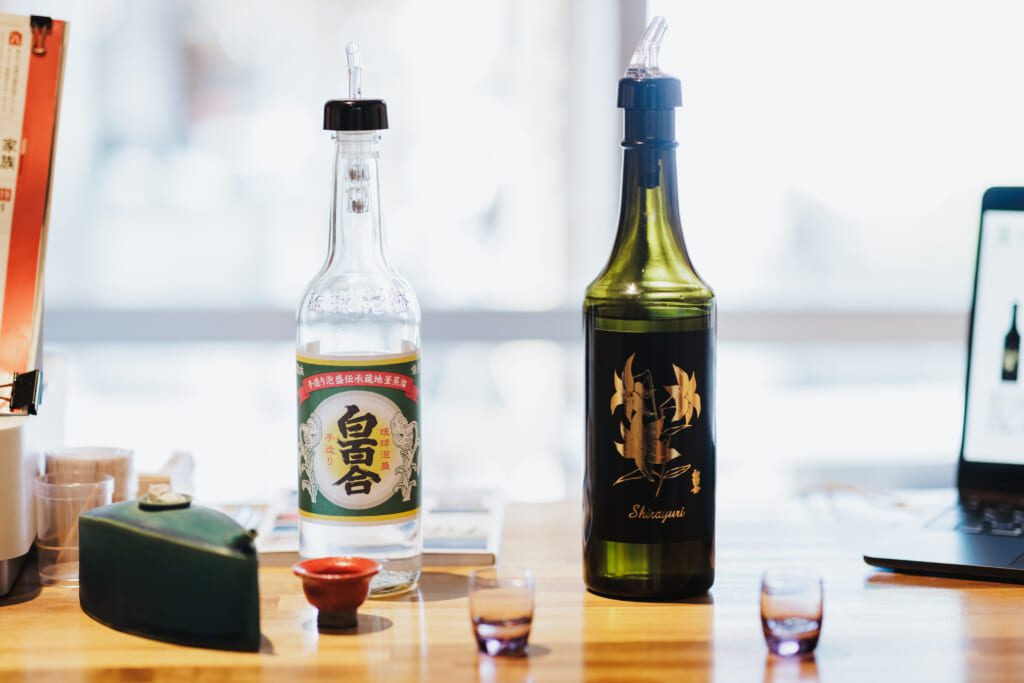
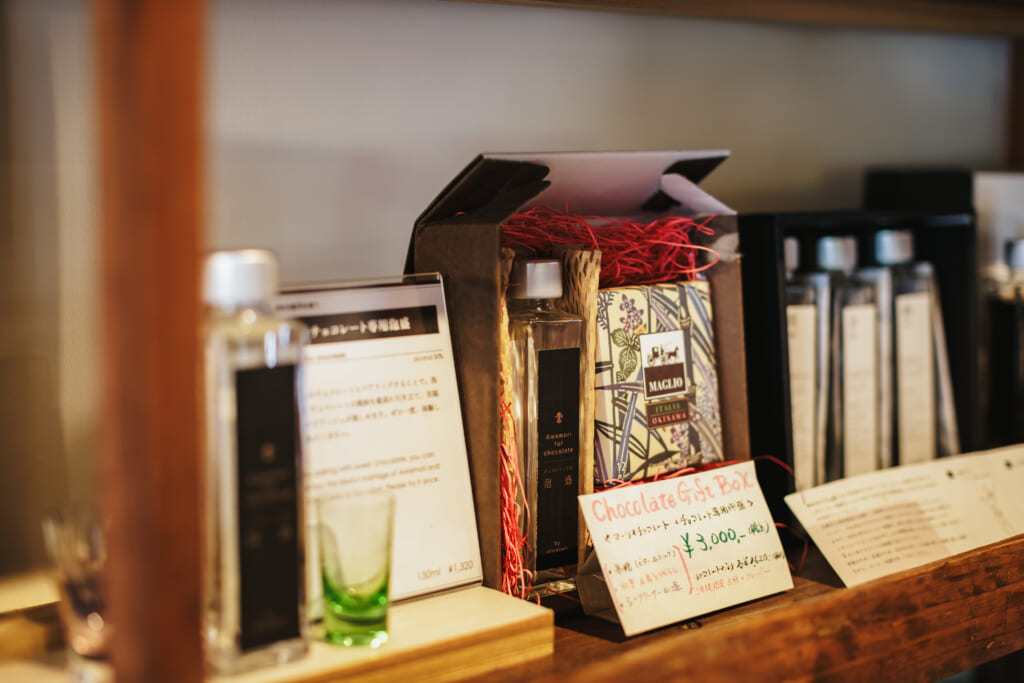
My thoughts about the Awamori tour & tasting experience at Ikehara Distillery
As close to Awamori production as possible
When I first learned we would have an Awamori experience and tasting, I had no idea what to expect. I could imagine the tasting part, but actually helping in the brewing process was hard to picture. I assumed the distillery would keep production and tours somewhat separate. But nothing could have been further from the truth. This tour offers a direct and thorough look into the Awamori brewing process, allowing you to get as close to production as possible. I found this aspect truly unique.
Lasting impression
The warm, inviting, and personal welcome we received, together with the dark, rustic interior and geta (traditional wooden slippers) left at the family entrance, felt so Japanese and homey. This really enhanced the authentic experience and left a lasting impression on me. Thank you so much, Yuu Ikehara; it was wonderful!
Find out about this Awamori tour
You can enjoy this tour and try the authentic flavors of Okinawa yourself at Ikehara Distillery in Ishigaki. Discover the craft of Awamori production and gain a deep appreciation for this characteristic Okinawan spirit. It’s a unique experience that will bring you closer to the heart of Okinawan culture.
-This Awamori tour is now available-
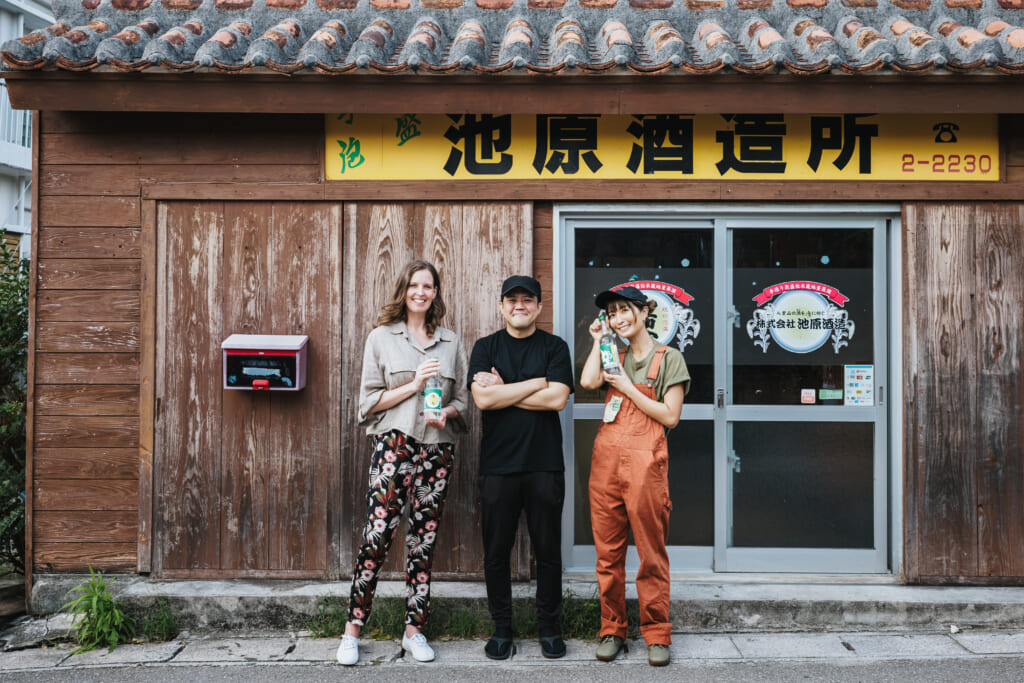
Sources:
Ikehara distillery
Yoshiaki Hagio, A guide to Okinawa’s alcohol culture and Awamori
Many thanks to:
Ikehara Distillery, Yuu Ikehara
Beautiful photography: Kou Miyara
My lovely companion: Minori
